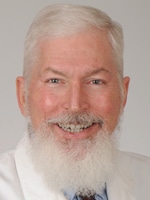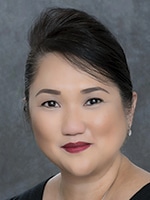March 2022—The omicron surge was waning on Feb. 1 when Compass Group members met by Zoom with CAP TODAY publisher Bob McGonnagle. Inpatient numbers, test demand, and positivity rates were declining. “We’re on the downslope,” Northwell Health’s Dwayne Breining, MD, reported.
But other pressures persist: the shortages of blood and staff. And the struggle to fill openings includes pathologist positions, said Judy Lyzak, MD, MBA, of Alverno Laboratories. “They have their choice of offers,” she said of those who complete pathology residencies, “and it’s taking much longer to fill a pathology position than it used to.”
The Compass Group is an organization of not-for-profit IDN system laboratory leaders who collaborate to identify and share best practices and strategies. Here is what they told McGonnagle about the difficulties for which there appears to be no end.
Reports indicate that the omicron outbreak is tapering off. Dwayne Breining, can you comment yet on the BA.2 variant?
Dwayne Breining, MD, executive director, Northwell Health Laboratories, New York: The news I’m getting on BA.2 is clinically and diagnostically it doesn’t look much different from anything else, but more to come on that for sure.
In vitro studies suggest that omicron immunity is effective against the other known variants. That’s potentially a good sign heading into spring. Of course, we don’t know how long the natural immunity lasts. Studies have shown that the vaccines provide more durable immunity than infection, but that remains to be seen with time.
I’m cautiously optimistic heading into the spring and we’ll see what comes next fall and winter when it gets cold.
Lauren Anthony, what’s going on in Minneapolis?
Lauren Anthony, MD, system laboratory medical director, Allina Health, Minneapolis: The positivity rate seems to be dropping off and our test volumes are starting to drop.
We’ve been tied up with the national blood crisis and planning for that. We had to get a more formal system process in place to prepare for potential severe shortage, and we’re monitoring it twice a day. We created new real-time dashboards to be able to pull that and spot-check it throughout the day, because as those of you who are Red Cross customers know, they are allocating to the hospitals but not keeping any in reserve for medical release. That means hospitals have to supply their own emergency needs and prepare for that as well as for routine needs. That’s unprecedented, so we had to implement planning—with a multidisciplinary group from across the system—for how we would react if we were in the red or magenta, which is our category at Allina for worse than red.
We’ve also been focused on the tube shortage, which has affected us, and we’ve taken steps such as piloting the bus route, trying to identify and address the barriers with a multidisciplinary stakeholder group. We’re piloting it at two campuses, a large one and a small one. We had limited success before, so we’re trying to get more success now.

Dr. Carroll
Steve Carroll, the problems with the blood supply came up last time we spoke. Are things getting any better there?
Steve Carroll, MD, PhD, chair, Department of Pathology and Laboratory Medicine, Medical University of South Carolina: No. We still have significant shortages in the blood supply. We’ve been partnering with the American Red Cross to set up blood drives to try to relieve it. We have had to put restrictions on the number of surgeries because our blood supply has gotten so tight, and we are doing a lot of education with other physicians, trying to get them to help us with conserving blood.
Is the root cause of the shortage primarily a donation problem?
Dr. Carroll (MUSC): My blood banker thinks it is, mainly that we don’t have as many people donating. Tony Bull [system administrative officer] arranged to do television pieces here locally, which coincided with national TV pieces about blood shortages. It was a win-win, and one of our pediatric surgeons gave a heart-wrenching emotional plea to the community to donate blood. We did get a kick up after that; it seems to be helping.
Linda Mirkes, what are you and your colleagues doing at Atrium Health to deal with another shortage—labor?
Linda Mirkes, MBA, MT(ASCP), assistant VP, core laboratory and integration, Atrium Health, Charlotte, NC: We’ve been looking at our science majors, biology and chemistry, and what duties and functions they can perform, and how we can balance our staffing models. We’ve long been using single-specialty accreditation. We have teammates in our microbiology lab who are certified just in microbiology and in our molecular lab who are certified just in molecular. We are leveraging the specialty certifications and have not had challenges with the appropriate degrees and specialist certifications. We’re trying to be creative and build pipelines with schools, but not enough candidates are coming through to fill all the positions.
What are the sources for these single-specialized credential folks?
Linda Mirkes (Atrium): They are ASCP certifications. We hire folks with the science degrees and make it criteria that within a year of employment, they get the certification. We help that process along. We’ve had good engagement there.
Stan Schofield, what are your thoughts on alternative pathways into the laboratory?
Stan Schofield, president, NorDx, and senior VP, MaineHealth: We’ve been doing it for 10 years. In the past couple of years we’ve employed 17 techs who entered through these pathways. A full four-year clinical laboratory scientist is hard to find. We have a number of people who are specialists in microbiology, hematology, chemistry, and we’ve been using that format—come in, work a year. We sponsor and support you, and if you take the test and pass it, you get paid as a med tech. If you don’t pass the test, you get to test again. If you don’t pass the second time, then you’re a lab assistant. For years we’ve had the train-your-own, grow-your-own mentality. It’s hard to find major universities or population density with the people with the education. We do the same thing with our phlebotomists; we have our own school for that.
We used to have 95 percent med techs and five percent lab assistants. We’re moving to more of a 60/40, where med techs don’t load the machine, take tubes out of the refrigerator, or throw out the trash. The secondary support in which they’re doing QC, problem-solving, and test interpretations is their primary function, and all support are non-certified, non-MT(ASCP) staff.

Carino
Winnie Carino, you have quite a few regulations around laboratory staff. Are you intrigued with these possibilities for improving a labor situation?
Winnie Carino, MA, CLS, MT(ASCP), director of laboratory services, Scripps Health, San Diego: The California Department of Public Health has said it is going to start a pathway from medical lab technician to our clinical lab scientists, but we’re still waiting for details on that.
The regulations in California for clinical lab scientists haven’t evolved much in the past several years. We still have the one-year internship and the requirements haven’t changed for many years. We still need a bachelor’s degree in related health sciences. I’m looking forward to the pathway from medical laboratory technician to CLS. The last word from the California Department of Public Health was it has been on the back burner because of COVID but that they’ve started to look at it again.
Will this be a big help in solving staffing problems?
Winnie Carino (Scripps): Absolutely, because it’s easier to get into an MLT program and quicker to finish it. A lot of them want to be a CLS, but the CLS programs in California are limited, so this will help.
What is your current vacancy rate for labs?
Winnie Carino (Scripps): In the past couple of months it’s been high, up to 15 to 20 percent for CLSs, and our pool of candidates for CLSs is small. And it’s difficult to fill the night shifts for our hospital sites.
Jim Crawford, can you fill us in on what the regulatory situation is in New York?
Jim Crawford, MD, PhD, professor and chair, Department of Pathology and Laboratory Medicine, and senior VP, laboratory services, Northwell Health, New York: The agenda item for today’s New York State Laboratory Leadership Consortium meeting is workforce. Eloise Aita, PhD, president of the New York State Clinical Laboratory Association, will present a masterful slide deck that summarizes NYSCLA’s survey of training programs for medical laboratory sciences, both in the state as well as with information from the country.
We have two dynamics. The first is the vacancy rate in the clinical laboratories. A survey of our consortium from May 2021 shows that our posted vacancy rate is 12 to 13 percent, but it does not take into account that a substantial minority of the workforce works two jobs, and the open bench positions, particularly on the off shifts, are being covered by supervisors, so the functional vacancy rate is considerably higher. For a state of 20 million that’s a daunting challenge.
If you look at the graduates of the National Accrediting Agency for Clinical Laboratory Sciences’ accredited programs in New York State and nationally and divide it by the number of total licensed technicians in New York State, the replacement rate per year of graduates is in the two- to three-percent range. NYSCLA estimates on the basis of age demographics that up to 50 percent of the state laboratory workforce will retire or leave employment in the next five years. The pipeline is inadequate.
In New York State, through the consortium, through NYSCLA, and through other agencies that are not strictly laboratory but rather the Healthcare Association of New York State, Greater New York Hospital Association, this is a call to arms. We have to work aggressively with STEM programs, school counselors, training programs at City University of New York, State University of New York, Brooklyn College, et cetera. It’s a long list. The challenge that was given to us by the CUNY School of Health Sciences and Professional Programs dean, who oversees 150 degree programs and has a quarter of a million students in CUNY per year, is if we’re only attracting 100 to 200 students into the laboratory science profession, shame on us—we need to be a more attractive profession. So the discussion has focused on what constitutes a good job, the perception of career progress in the laboratory profession, and how medical laboratory sciences for STEM candidates compare with the other medical and health professions. We have a lot of work to do, and the hour has passed for us to tackle this. This is the major agenda item for the state consortium, which is 12 of the 13 academic health system departments of pathology and laboratory medicine.
Will there be action items looked at today?
Dr. Crawford (Northwell): The primary action item now is working in Albany because there’s statutory correction, which is required to empower the New York State Education Department to recognize degree programs from elsewhere in the country for recent graduates as well as for experienced laboratory technologists who might move into the state. The barrier is high for both of those. The pipeline up through New York programs meets state education department requirements. Pipelines elsewhere in the country do not necessarily meet New York State requirements. So this is a statutory effort to correct that misalignment. And then the remainder is not just recruitment but also retention.

Dr. Dysert
 CAP TODAY Pathology/Laboratory Medicine/Laboratory Management
CAP TODAY Pathology/Laboratory Medicine/Laboratory Management
